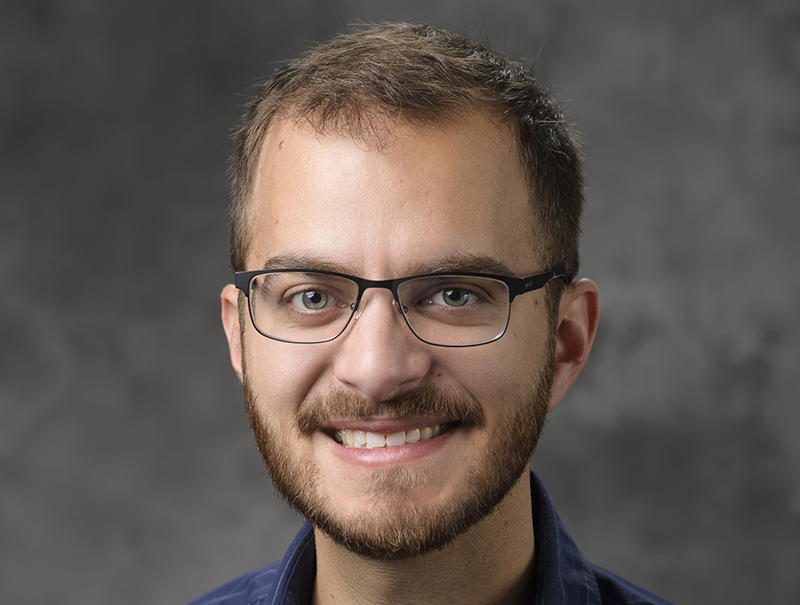From childhood interest to academic pursuit
Pedro Bassoe developed an interest in Japanese culture as a child, oddly enough while making family trips to Brazil

Pedro Bassoe’s interest in languages and cultures dates back to childhood.
For one thing, his mother is originally from Rio de Janeiro, so Bassoe and his family made frequent trips to Brazil to visit his grandmother and cousins.
“Everybody would speak to me in Portuguese, so I was always interested in what other languages and places were like,” recalled Bassoe, who grew up in central Florida.
Oddly enough, those summertime trips sparked an interest in one culture in particular: Japanese. Like many adults who grew up in the ’80s, ’90s, and early 2000s, Bassoe fondly remembers playing video games from the "Legend of Zelda" and "Super Mario Bros." series manufactured by Japanese giant Nintendo. In Brazil, he was also swept up in the Japanese anime craze, becoming a fan of titles like "Saint Seiya" that developed a sizable following of Brazilian anime enthusiasts.
Those early influences inspired Bassoe to take a Japanese course as a freshman at Ball State University, and he instantly fell in love.
“I started off just taking a class and then I made it a major after a few weeks,” said Bassoe, a new assistant professor of Japanese language and culture. “I got to study in Japan and just got deeper and deeper into it by that route.”
Bassoe’s newfound passion motivated him to complete a bachelor’s degree in anthropology and Japanese Language at Ball State, and later a master’s in Japanese literature from the University of Oregon and a Ph.D. in Japanese language and literature from the University of California, Berkeley.
Those academic pursuits allowed for plenty of travel to the land of the rising sun.
Bassoe first studied in Japan in 2008 on an eight-month immersion program at Sapporo University, a sister school to Ball State. Three years later, he participated in a Foreign Language and Area Studies (FLAS) program in Kyoto, which included a home stay. His longest, most intensive academic trip to the country came during the 2015-16 school year, when a Fulbright scholarship enabled him to spend a full year conducting dissertation research. In that dissertation project, he focused on the tradition surrounding the prevalent imagery and illustration in Japanese literature – a research interest that originated when one of his classes at Berkeley visited the library to view its vast collection of 19th-century, original-print Japanese novels.
“My professor, Dan O’Neill, who was my dissertation advisor, pulled a bunch of books from the rare-books room at the library and there were spectacular illustrations in there,” Bassoe said. “These full, foldout images in the fronts of the books had all kinds of lacquer and mica and all this shiny stuff, and they were really intense images. Everyone was just like, ‘Ooh’ and ‘ah.’
“I never had known that those existed, that those were part of those books, so that kind of sparked in me a desire to know more about those, but since I had only worked on literature up to that point, I had no idea how to talk about images. So I spent the next few years at Berkeley figuring out how to talk about images.”
Bassoe worked with art historian Beate Fricke to develop an understanding of perspective and framing, and he examined volumes of Japanese literature from the period, both at Berkeley and in Japanese libraries during his Fulbright excursion.
“I realized that everything was illustrated and there were all kinds of illustrations everywhere, and it was just something that I had been completely aware of,” he said.
Bassoe completed the dissertation in the summer of 2018 and worked as a visiting assistant professor at Willamette University in Oregon for the last year. After responding to an advertisement posted earlier this year concerning a position in Purdue’s School of Languages and Cultures, Bassoe said he became intrigued by the opportunity to work with colleagues whose work might intersect with his own.
Conversations with faculty members Beate Allert and Dawn Stinchcomb only increased his enthusiasm.
He accepted a position at Purdue that started with a research semester this fall. He will teach his first courses during in the spring: one of which will be a pedagogy course that provides graduate students with tools to teach Japanese literature and the other an introductory Japanese literature course for undergrads.
“Basically all the conversations I had with people here were really inspiring. It felt very comfortable very quickly, and I like being at a big school, a big university that does have that emphasis on research,” Bassoe said. “I didn’t really know what Purdue was before I came to visit, but then when I came to visit, it was like, ‘Wow, this is really cool.’ ”